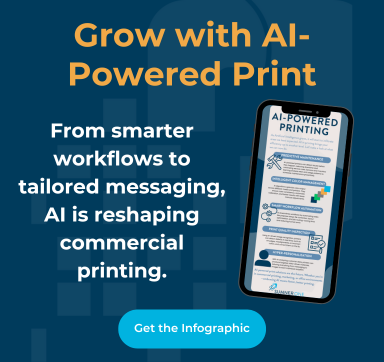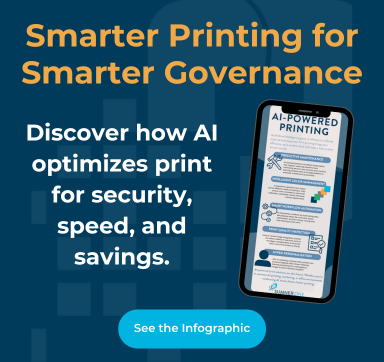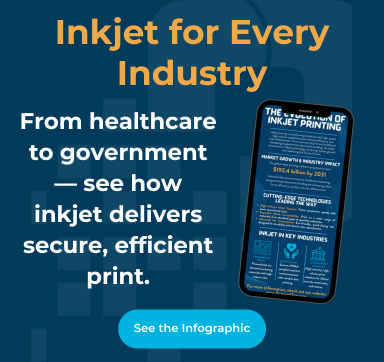Chances are, you’ve been on the reduce, reuse, and recycle bandwagon for a while. You’re committed to doing what you can to being environmentally friendly and energy efficient, hoping to protect the planet for generations to come. But it’s possible that you didn’t know that your efforts to reduce your carbon footprint are made easier through technology advances. Furthermore, you also may not realize that the sustainable practices or products and services you’re offering at your business are improving your appeal to consumers and thus improving your bottom line.
In a survey administered last year, CGS, a global provider of business applications, found several confirming trends that customers’ habits align with supporting businesses that are committed to environmental sustainability. Two key findings from the study include (1) that buyers want sustainable products with over 1/3 surveyed stating they would pay up to 25% more for them, and (2) that the second-highest value proposition for consumers is a brand’s sustainable/ethical business practices.
One of the largest business sectors leading the eco-friendly charge is technology, and even this charge is twofold. Technology is doing what it can to revolutionize the other industries in terms of how they can do business better (efficiency), and it’s continually developing new tools (innovation) to create new ways to do work. Because of the way technology advances, in both efficiency and innovation simultaneously, it’s impact on sustainable development and its business implications is the most impactful and exciting.
By no means is the following list exhaustive, but there have been several meaningful technological improvements that have increased sustainability in recent years.
1. Supply chain responsibility
A supply chain is a network between distributors, manufacturers, and creators of goods. The network handles storing and moving raw materials and finished products from the point of origin to consumers. To say that supply chain efficiency has come a long way is an understatement. What used to be tracked on paper has moved to electronic tracking and now to protected blockchain databases. Streamlining business practices has cut down on waste, pollution, and carbon footprints.
Not only has supply chain efficiencies helped with trimming excess, but it’s also helping with responsible sourcing of natural resources. Because of the enhanced tracking capability inherent in updated supply chain systems, corporations are better able to see where their raw materials are coming from. They can determine if their mining practices are environmentally sound and make adjustments as necessary.
2. Energy efficiency
Smart thermostats, light bulbs, and power strips aren’t just for home use. Corporations are buying these products for use in the office, and they are seeing their conservation efforts pay off at scale. Changing only five light bulbs can save $75/year, and TechRepublic reported that a store saved $3,000 annually — and reduced its energy consumption by 30,000 kilowatts — by setting its air conditioner to turn on at 75 instead of 74 degrees.
Do people in your office ever forget to turn off the lights? Using smart switches that are hooked up to the Internet of Things (IoT) can be set remotely. Lights can be switched off on a timer (i.e. 6:00 pm daily), or a motion sensor. Computers can be turned on and off for updates as necessary instead of being left on all the time. Using smart power strips, too, can help with energy conservation. Smart strips determine which tools that are plugged in are actually in use, and only send power to those items.
3. Recycling innovations
Several technology companies are trying to create products that are committed to sustainable business. For example, Apple has unveiled its new MacBooks made with 100 percent recycled aluminum. Investigating what products you are going to introduce into your office and committing to only buying those that are environmentally friendly is a positive business practice.
Starting a recycling program at your office is another easy way to encourage others to participate in sustainability. Integrating technology into the recycling program can make it more impactful; when people see a measurable amount of difference they’ve made, it drives home the impact. For example, there’s a program called PrintReleaf that partners with businesses. PrintReleaf will measure your company’s paper consumption, calculate the impact on forestry, and then your paper footprint is automatically reforested at a planting site of your choice.
4. Predictive Maintenance
SumnerOne wrote a blog a while ago explaining predictive maintenance. In a nutshell, predictive maintenance is when machines let us know that they need maintenance instead of us scheduling it for them. A piece of technology is hooked up to the Internet of Things (IoT) and uses machine learning to predict when it will need routine servicing or when it is close to end of life. No more wasting time, energy, products, etc. Machines would run smoother and with more energy efficiency—also they’d only be recycled at the very end of life, once all their parts could no longer be replaced.
As we begin 2020, several of us are thinking about resolutions, goals for year and beyond, so there’s no better time than to start exploring ways to incorporate technology improvement into your business plan. Not only will they streamline business practices, but they will increase your appeal to potential customers, increase energy savings, and help protect the environment for generations to come.
SumnerOne is committed to environmental sustainability, and we’d love to help you assess your business for potential improvements in this area, especially when it comes to managed print. Contact us today to see if you could be doing more to cut waste and costs.
 FREE EBOOK DOWNLOAD
FREE EBOOK DOWNLOAD
















